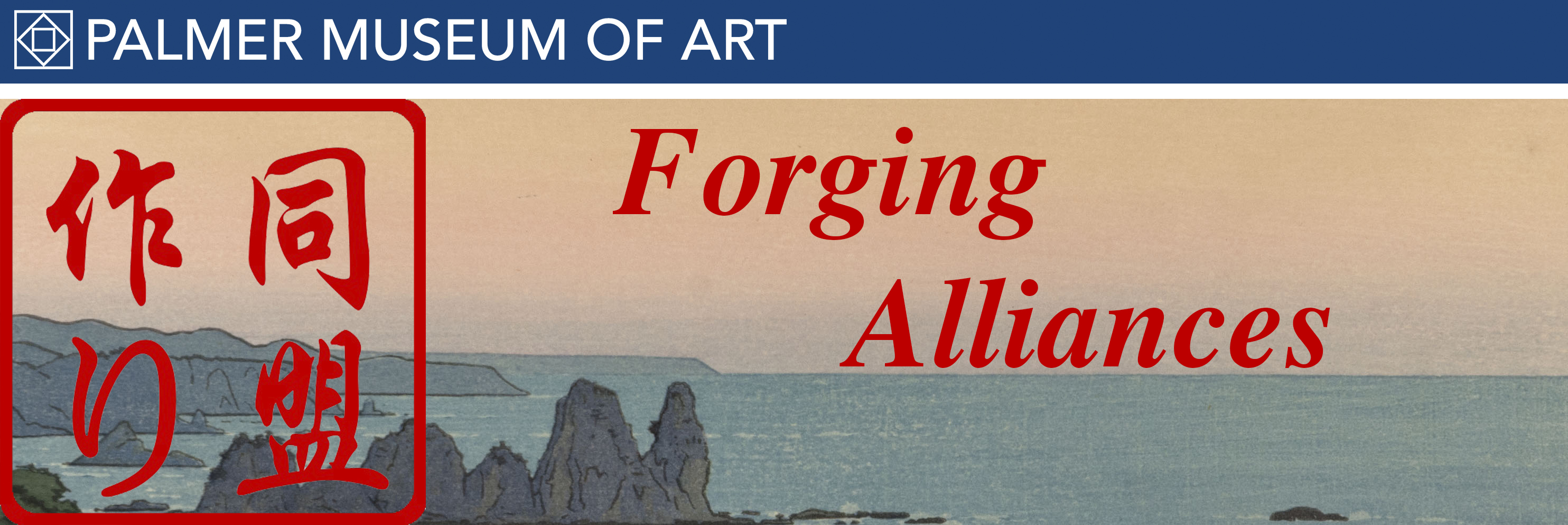Modern Japanese Prints: An Art Reborn
Item
Title
Modern Japanese Prints: An Art Reborn
Creator
Oliver Statler
American, 1915–2002
American, 1915–2002
Description
Published by Charles E. Tuttle Company, Tokyo and Rutland, Vermont.
James Michener’s introduction to this book describes Oliver Statler as "a quiet American who entered Japan as a civilian employee of the army during the first years of the Occupation, and ended as a private citizen dedicated to scholarship." Statler studied sōsaku hanga (modern creative prints) and promoted the artists of this movement to the West. The fusion of Eastern and western aesthetics in sōsaku hanga provided a relatable aesthetic for western audiences to appreciate.
"One of the most encouraging things about the new prints is that each artist is unique," Statler wrote in Modern Japanese Prints. The book’s structure as a series of biographies of the artists and descriptions of their techniques and aesthetics highlights the artists' creativity and individuality, countering western wartime propaganda that portrayed the Japanese as a robotic, like-minded mass. The book was popular and critically acclaimed. The scholarly journal Monumenta Nipponica reviewed Modern Japanese Prints as, "an astonishingly successful blend of scholarship and enthusiasm" and "a 'must' book on the shelves of anyone who considers himself interested in the highest-ranking medium of contemporary Japanese art." Statler was praised for "introducing these print makers as a living experience," which "succeeds in communicating his enthusiasm for a print or for its author."
The physical qualities of this book, with its wrap-around dust jacket reproducing a print by Kiyoshi Saitō of a Zen rock garden and its color reproductions, offered readers a sumptuous invitation to the appreciation of Japanese woodblock prints. “The creative-print artist really creates his picture as he works with his wood, his chisels, and his colors,” Statler explains. The design of the book reflects this emphasis on wood, with a silver panel embossed with a wood grain pattern on the hard cover and endpapers made of very thin wood veneer.
James Michener’s introduction to this book describes Oliver Statler as "a quiet American who entered Japan as a civilian employee of the army during the first years of the Occupation, and ended as a private citizen dedicated to scholarship." Statler studied sōsaku hanga (modern creative prints) and promoted the artists of this movement to the West. The fusion of Eastern and western aesthetics in sōsaku hanga provided a relatable aesthetic for western audiences to appreciate.
"One of the most encouraging things about the new prints is that each artist is unique," Statler wrote in Modern Japanese Prints. The book’s structure as a series of biographies of the artists and descriptions of their techniques and aesthetics highlights the artists' creativity and individuality, countering western wartime propaganda that portrayed the Japanese as a robotic, like-minded mass. The book was popular and critically acclaimed. The scholarly journal Monumenta Nipponica reviewed Modern Japanese Prints as, "an astonishingly successful blend of scholarship and enthusiasm" and "a 'must' book on the shelves of anyone who considers himself interested in the highest-ranking medium of contemporary Japanese art." Statler was praised for "introducing these print makers as a living experience," which "succeeds in communicating his enthusiasm for a print or for its author."
The physical qualities of this book, with its wrap-around dust jacket reproducing a print by Kiyoshi Saitō of a Zen rock garden and its color reproductions, offered readers a sumptuous invitation to the appreciation of Japanese woodblock prints. “The creative-print artist really creates his picture as he works with his wood, his chisels, and his colors,” Statler explains. The design of the book reflects this emphasis on wood, with a silver panel embossed with a wood grain pattern on the hard cover and endpapers made of very thin wood veneer.
Source
The Pennsylvania State University Libraries
Rights
This image is posted publicly for non-profit educational uses, excluding printed publication. Other uses are not permitted.

